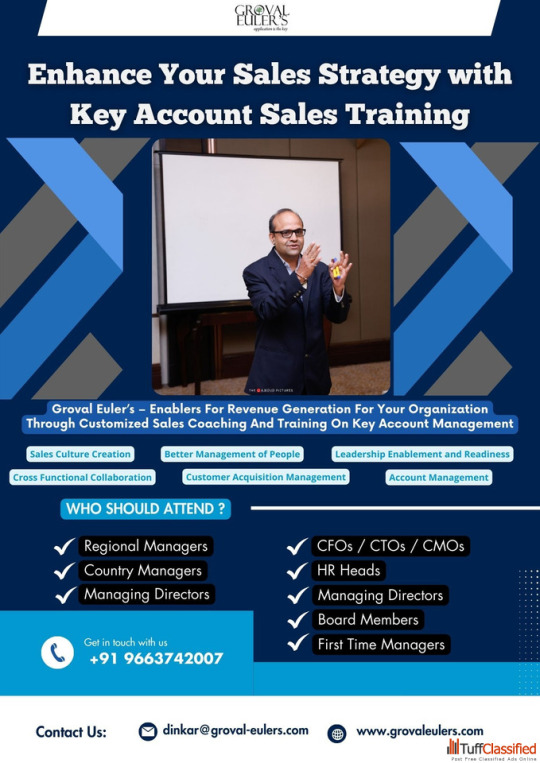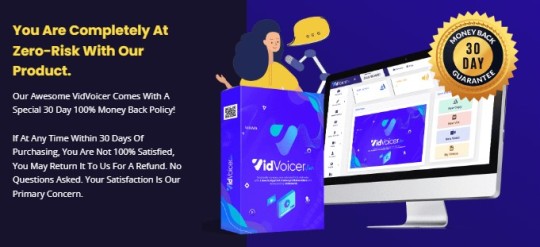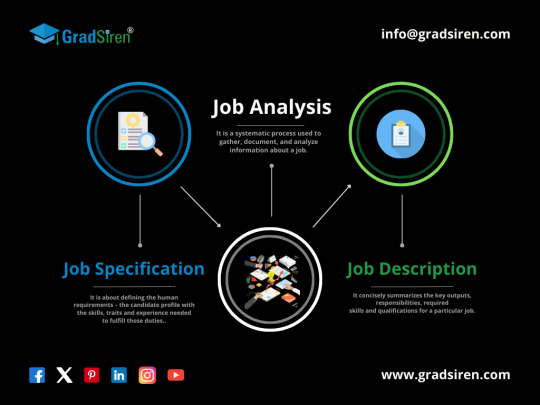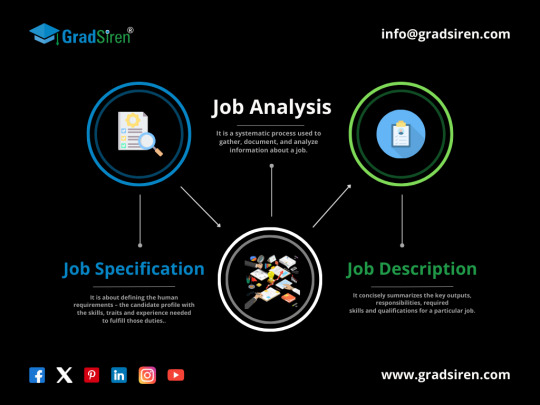#key account sales training
Explore tagged Tumblr posts
Text
Enhance Your Sales Strategy with Key Account Sales Training

Transform your sales strategy with our exclusive Key Account Sales Training, led by industry veteran Dinkar, who brings over 24 years of sales management experience. This program is perfect for Sales Heads, Regional and Country Managers, Managing Directors, Board Members, First-Time Managers, Sales Teams, Functional Heads, HR Leaders, and senior executives like CFOs, CTOs, and CMOs.
What you’ll gain:
Tailored strategies for managing key accounts Advanced tools for building trust and credibility Techniques to maximize revenue and account growth A culture of sales excellence
Don’t settle for ordinary—empower yourself and your team to excel. Contact us at +91-96637 42007 [email protected] to secure your spot today.
0 notes
Text

Innovative business models for small scale solar powered irrigation
If rolled out at scale, solar-powered irrigation systems hold huge potential. They work for smallholder farmers, who account for 80% of sub-Saharan Africa’s farms, according to the UN Food and Agriculture Organization. But they also displace expensive and polluting diesel pumps and can, if managed correctly, contribute to efforts to manage scarce water resources well for the long term.
Chiefly, there is the issue of affordability. Farmers need to be able to pay the upfront cost of a solar-powered irrigation system and to pay for the duration of its use. When compared with the diesel-fueled irrigation pumps many farmers use today, the total lifetime cost of solar powered irrigation systems can be substantially lower. We estimate farmers can save 40% to 60% on irrigation costs.
As we see across the off-grid solar sector, adopting a pay-as-you-go (PAYG) approach – or, in our case, pay-as-you-grow – has the benefit of allowing farmers to pay for their systems over time, as their income increases due to better harvests.
Moving on from affordability, maintenance is the next key challenge, particularly in remote and rural areas where farms can be hard to reach and the availability of trained technicians is limited. By managing the lifecycle of pumps from design through manufacture, finance, installation, and maintenance, companies can work with farmers to ensure that pumps are able to continue to function in often challenging local conditions, season after season.
Internet-of-things (IoT)-enabled technology enables trained teams to monitor pump performance and conduct maintenance remotely. This is complemented by strategically located sales and service centers and a distributed team of field engineers able to rapidly respond to maintenance issues, expand local capacity and minimize downtime for farmers reliant on irrigation for successful harvests.
Again, solar-powered irrigation has an advantage over diesel pumps in that their fuel source is abundant and locally available. Fewer moving parts also make solar-powered irrigation systems less liable to break down than their diesel counterparts.
Source
25 notes
·
View notes
Note
I’m relatively new to the fandom and have really enjoyed a lot of your posts… I have a question that I couldn’t quickly find an answer to in searching through your tags…
What’s the deal with streaming? Like, I listen to BTS. I enjoy them a lot, I listen to a pretty even mix of all their albums though I probably like MOTS:7 era the best). Some days I listen to them like all day lol (if I’m cleaning the house or something) and I listen to them a lot in the car or while working. I’ve enjoyed some solo releases more than others so I naturally streamed those more. but like the more I start following accounts on here and on army twt the more confused I get about the intense pressure to stream constantly? I’ve heard that people play certain songs (or albums I guess?) on repeat on mute and/or have dedicated streaming devices they keep going all the time.
Not to be negative or rude at all but like…what? Maybe because I’m new to KPop and have never followed it until BTS but that just sounds so weird and… idk the word, maybe disingenuous? Again I do not mean this as an attack I am just genuinely confused. Wouldn’t BTS themselves want us only to listen if we were actually enjoying it and not out of some competitive attempt to get better ratings? It feels so odd to me, like that is not how I would behave with any other artist that I love. I would only ever listen to them out of a genuine desire to hear their music. But there seems to be so much weird shaming out there for when/if songs are not streamed heavily enough? And for any other artist I would just write that off as a difference in taste among the fandom, but here it’s treated like a personal wrong against the artist…?
But as I say that I’m sure there’s more to it… I have definitely seen people talking about payola or chart manipulation so idk. If I should google this instead, just tell me to, I just have already tried and didn’t find that much clarity, just a bunch of people on quora and Reddit talking about certain songs not getting streamed enough.
Anyways this is super long, sorry if it annoys you. Just thought you seemed knowledgeable and levelheaded enough to ask? Love your posts. All the best.
*
Ask 2:
Okay wait I’m the anon that just asked about streaming and I went and re-read your post about “inorganic success” — I had read it before but somehow I didn’t put together that the 24-7 streaming is an attempt to combat payola or like go up against it I guess. Okay. That makes more sense. I still feel like there’s a weird focus on charting but I guess if it’s about getting more concert venues and more radio play it makes sense.
You can ignore my last ask then I’m sorry if I’m being dense or something lol.
***
You haven’t at all asked a stupid question. Your confusion is easily explained by you being new to k-pop, and everyone new to this madhouse asks this question eventually. I’ve talked about this before, but can’t find the post for the life of me so I’ll briefly go over it again.
First, you need to understand what k-pop is. K-pop is a system that gamifies music consumption. Competition is something you’ll see in the music industry regardless. Western stans such as Arianators, Barbz, and the Beyhive have organized around streaming goals and efforts for at least 10 years now. But there’s no other music industry that explicitly emphasizes competition among groups and fans, the way the k-pop industry does.
Competition is baked into its DNA:
From the idol training system under agencies with supposed specialities that are treated like warring houses a la Game of Thrones (a mentality created by the Big 3),
to the music shows where fans are encouraged to vote daily and weekly for the best artists and where wins are tied to streaming numbers,
to the highly publicized year-end award show criteria that outline key metrics for wins in streams, sales, and fan votes.
Basically, the k-pop industry creates a clear hierarchy of talent and acclaim for artists in their system, directly stokes fan participation in buying into that hierarchy, and the numbers are the easiest litmus test/short cut to settle the question of who is at the top.
And all of this is served with a cocktail of parasocial delusion and entitlement that has (more easily manipulated) fans thinking their perceived investment into their faves, earns them the right to micromanage their fave idols’ careers. All of this benefits the labels and industry because they’d rather have you more engaged (even if toxically), than not.
Everybody here buys into this system despite what they’ll tell you, some just manage to keep their wits and perspective to prevent getting sucked in, while others fall headfirst into it.
And so, like I said in my ‘inorganic success’ post you referenced, the focus on streaming is part of fans really just playing the game. Excess is something you’ll see on the charts in any case, whether in k-pop or in the West.
The difference with BTS and ARMYs however, is in the why of how the fandom streams. Essentially, you’re more likely to find people just as passionate about the music itself as they are about giving that music its due in hard numbers and consequently, recognition. You’re more likely to find fans like this in the ARMY fandom, than any other, in my opinion. Some people forget that the og ARMYs were k-pop fans first. They were fans who intimately understood how this system worked, they understood why the Big3 maintained dominance in k-pop for literal decades, and they saw the worth in the music BTS made, loved it enough to invest time into the playing the game better than anyone else at the time - pushing BTS from nugu status to where they are now, competing well outside the realm of the k-pop system but in a space that remains complex and highly competitive.
Another aspect that differentiates how ARMYs stream vs other k-pop fandoms, is that due to the sheer size of the fandom in absolute numbers, the average ARMY typically streams less than a typical k-pop stan. Basically, in other fandoms the typical stan has to stream more per person to have even a fraction of the gains seen in the ARMY fandom. ARMYs also aren’t doing anything other fandoms aren’t doing, it’s just that so far, they’re more efficient at it and don’t have to worry too much because BTS makes music that keeps attracting more fans, adding to the size of the fandom. They’ve also generally stayed away from more illegal methods given the intense scrutiny and animosity the fandom has faced for being part of the reason BTS upended the ordained hierarchy in this space. It sounds silly but it’s true.
But that’s only one side of the story. The other side is that in the fandom, everybody here really just does what they want. And many people genuinely enjoy listening to BTS that much and that intensely. Going by personal experience in what I observed before I became ARMY, I noticed that many ARMYs are Type A and organized - people who like and study data. The first time in my life that I saw someone create a spreadsheet for fan theories on a k-pop MV, was when an ARMY made one for I NEED U MV. I’m not sure what it is about BTS, but from the beginning they’ve attracted the sort of fans who genuinely enjoy listening to music often, people who enjoy creating and playing around with playlists, and people who track and measure applicable data. So your assumption that the people who stream like this are people who don’t actually enjoy the music, is wrong. In my opinion. For a lot of ARMYs, streaming and appreciating the music isn’t mutually exclusive.
Personally, I listen to music a lot. And I’ve always been that way, so when I became ARMY, I just sort of naturally fit into that culture. The sort of music BTS makes is a joy to listen to, I play their stuff literally everyday and it feels like the most normal thing in the world for me to sleep to Serendipity sometimes (in my sleep playlist which includes brown noise and rain sounds), or to do laundry to Let Me Know playing, or to drive to UGH and Set Me Free Pt 2 playing. I have multiple accounts because I listen to all kinds of music all the time, and it’s just convenient for me to have things set up such that I can flip on a playlist in every situation I’d want one on.
But like I said, the reality is that everyone in this fandom does what they want. It’s true there are certain people in the fandom who obsess over streaming, these are typically chartmys and akgaes, but most other people stream however they like. Fandom in general is a pressure cooker environment so I don’t blame you for noticing that pressure, but at the end of the day you really should just do what makes the most sense to you.
ARMYs generally recognize the reality of the space they are in, they recognize what it means for BTS, and most simply tweak their normal listening habits to maximize the gain and support to BTS. Plus sometimes it’s fun to play into fandom’s initiatives as a way to connect with other fans (such as in streaming parties).
I ended up rambling but let me know if this answered your question.
30 notes
·
View notes
Text
👉 VidVoicer Review ✅ Features, Pricing, Bonuses and OTOs 🚀

VidVoicer Overview 🌟
VidVoicer is an AI-powered tool designed to create videos and voiceovers quickly and efficiently. Its standout features include high-quality HD video rendering, text-to-speech voiceovers in 150+ voices and 50+ languages, and a built-in video editor. The software is beginner-friendly, allowing users to create whiteboard, explainer, and social media videos without prior experience. It is entirely cloud-based, so it can be accessed on various devices without installation.
👉 Click Here for Get Instant Access VidVoicer 🖰 >>
Key Features 🔑
Voiceovers & Languages: Generate human-like voiceovers in multiple languages and genders with pitch, tone, and speed controls.
Video Creation: Transform text into videos, use images from keywords or URLs, and integrate voiceovers seamlessly.
Video Editing: Add logos, watermarks, background music, and customize videos easily.
HD Quality: All videos are rendered in high definition.
Commercial License: Sell videos and voiceovers to clients for unlimited revenue potential.
👉 Click Here for Get Instant Access VidVoicer 🖰 >>
Pricing & Upgrades 💰
Front-End (FE): $37Includes commercial rights, basic video and voiceover creation tools, and a 1GB monthly storage limit.
OTO 1 - Pro Edition: $67Adds unlimited videos/voiceovers, extended character limits, custom music, 2GB storage, and access to stock videos.
OTO 2 - Content Writer: $37AI-powered copywriting tools for creating sales copies, email templates, articles, and more.
OTO 3 - Agency Rights: $97Enables starting a video/voiceover agency with marketing resources.
Discount codes are often available, such as a 50% off coupon during promotions.
👉 Click Here for Get Instant Access VidVoicer 🖰 >>
Bonuses 🎁
VidVoicer often comes with exclusive bonuses, including additional templates, tutorials, and stock resources, depending on the purchase plan.
Strengths & Monetization 🌍💼
Ideal for freelancers, agencies, or content creators aiming to provide services like explainer videos, voiceovers, and podcasts.
The commercial license enables users to generate income by selling creations directly or offering services on platforms like Fiverr and Upwork.
👉 Click Here for Get Instant Access VidVoicer 🖰 >>
FAQs
👉 What Exactly Is VidVoicer?
VidVoicer is a web-based platform for creating voiceovers and videos. Since it does both, it's the only tool you'll need. Simply log in, enter any text (such as a video script), choose a voice and language, and click the button to instantly create a voiceover or video. You can then edit or download those files immediately.
👉 How Many Voiceovers Can I Create?
You can create unlimited number of voiceovers Longer up to 1000 characters per voiceover with the personal license, and up to 3000 characters per voiceover with commercial license.
👉 How many videos can I create?
You can create as many videos as you need. Each video will be stored in the cloud storage on our platform, and you can also download the MP4 file. Your membership includes 1GB of storage, so if you use all of that, you can simply download some videos and delete them from the cloud to free up some space.
👉 How To Get Started?
Just click the order button and go through the checkout process. Your membership account will instantly be set up and activated. When you log in, you'll find tutorial videos, and you can begin using the tools immediately.
👉 Is there a commercial license included?
There is an option to buy commercial license. Buyers can opt for personal access as well as commercial license. Commercial rights will enable you to sell these services and make money.
👉 Click Here for Get Instant Access VidVoicer 🖰 >>
👉 Is There Any Training Included?
Yes, We Have Created A Video Tutorial To Guide You How To Use The Software Just To Make Sure You Make No Errors And Do It Easily, Hassle Free.
👉 Is It Still Worth it if I Have Only Few Voiceovers To Be Generated?
Sure. Would you prefer to spend $100 or more to have one voiceover created? With VidVoicer, you can create voiceovers on demand, over and over. You can create the voiceovers you need now, and any that you may need in the future, all for the small one-time fee to join today. With VidVoicer you don't have to search for freelancers or deal with contracts. To us that sounds like it's worth it even for a few voiceovers!
👉 Will This Work On Mac And PC?
Yes, It Doesn’t Matter What Operating System Of Device You’re Using. It Is Easy To Use And Works Perfectly, Every Time.
👉 Click Here for Get Instant Access VidVoicer 🖰 >>
👉 Do You Provide Support And Updates?
Yes! VidVoicer Is Super Easy To Use, But If There’s Ever An Issue, We’re Right Here. Send Us An Email And We’ll Fix You Up! We’ll Also Let You Know When New Updates Are Available, And Offer Them To You For Free, As A Valued Customer!
👉 Is There A Money Back Policy?
Yes, You Get 30 Days To Use VidVoicer And Make Sure This Is For You. If For ANY Reason You’re Not Satisfied, Just Let Us Know, And We’ll Get You A Refund Of Your Tiny Investment Here Today.
👉 Is It Newbie-Friendly?
Yes. You Don’t Need Any Special Skills Or Technical Experience To Generate Human Like Voiceovers.
👉 Is It Compatible With All Video Editing Softwares?
Yes It Is. VidVoicer Is Compatible With All Video Apps.

👉 Click Here for Get Instant Access VidVoicer 🖰 >>
#vidvoicer review#vidvoicer#vidvoicer demo#vidvoicer reviews#vidvoicer software review#vidvoicer bonus#vidvoicer bonuses#get vidvoicer#buy vidvoicer#vidvoicer review & bonus#vidvoicer otos#vidvoicer review bonus#vidvoicer review and demo#review vidvoicer#vidvoicer demo review#vidvoicer review 2022#vidvoicer preview#vidvoicer review bonuses#vidvoicer review and bonus#vidvoicer software#what is vidvoicer#vidvoice review#vidvoicer discount#marketing#affiliatemarketing#onlinemarketing#review#reviews#software#preview
2 notes
·
View notes
Text
Accounting Outsourcing India by MAS LLP: Streamline Your Business Operations
In today’s competitive business landscape, companies are constantly seeking ways to optimize costs and enhance efficiency. Accounting outsourcing in India has emerged as a highly effective solution for businesses worldwide. MAS LLP, a trusted name in financial services, offers expert accounting outsourcing solutions tailored to meet the unique needs of businesses across industries.

Why Choose Accounting Outsourcing India? Outsourcing accounting services to India has gained immense popularity due to several key advantages:
Cost Efficiency India offers high-quality accounting services at a fraction of the cost compared to Western countries. Businesses can save significantly on overheads like salaries, training, and infrastructure by outsourcing to skilled professionals in India.
Access to Skilled Professionals India is home to a vast pool of certified accountants and financial experts. By partnering with an experienced firm like MAS LLP, you gain access to knowledgeable professionals who ensure accuracy and compliance.
Focus on Core Business Activities Outsourcing accounting tasks allows businesses to focus on their core operations, such as sales, marketing, and product development, while leaving the financial complexities to experts.
Scalability Whether you're a startup or a large enterprise, accounting outsourcing India offers flexibility to scale services as your business grows.
Services Offered by MAS LLP As a leading provider of accounting outsourcing India, MAS LLP offers a comprehensive range of services, including:
Bookkeeping and Accounting Accurate bookkeeping is the foundation of effective financial management. MAS LLP ensures your records are maintained meticulously, allowing you to make informed decisions.
Payroll Management Outsource your payroll processing to MAS LLP for timely and error-free salary disbursements, tax calculations, and compliance with labor laws.
Taxation Services From GST filings to corporate tax returns, MAS LLP provides end-to-end taxation support to ensure compliance with Indian tax laws.
Financial Reporting Receive detailed financial statements and reports that provide a clear picture of your business's financial health, helping you strategize effectively.
Compliance and Regulatory Support MAS LLP ensures your business adheres to all regulatory requirements, minimizing the risk of penalties and legal complications.
Why MAS LLP Stands Out MAS LLP is not just another outsourcing firm—it’s a partner committed to your success. Here’s why they’re the preferred choice for accounting outsourcing India:
Client-Centric Approach: MAS LLP focuses on understanding your business needs and providing personalized solutions. Timely Delivery: They prioritize deadlines, ensuring your financial tasks are completed on time. Proven Track Record: MAS LLP has a long list of satisfied clients who have experienced significant growth through their services.
Conclusion Accounting outsourcing India is a smart choice for businesses looking to reduce costs, improve efficiency, and achieve financial accuracy. With MAS LLP as your trusted partner, you can rest assured that your accounting needs are in expert hands.
Take the next step toward streamlining your business operations—partner with MAS LLP today for reliable and professional accounting outsourcing India!
#accounting & bookkeeping services in india#audit#businessregistration#chartered accountant#foreign companies registration in india#income tax#auditor#taxation#ap management services
6 notes
·
View notes
Text
Top Sales Strategies for Banking Professionals

In the highly competitive world of banking, sales professionals need to go beyond basic customer service. They must master the art of selling a variety of financial products—from loans and credit cards to investment opportunities and wealth management services. For banking professionals, having a well-rounded skill set and using proven sales strategies can be the key to boosting performance, meeting targets, and building lasting customer relationships.
Sales strategies for banking professionals differ from other industries because financial services are complex, often involve long-term commitments, and require a high level of trust. Therefore, a specialized approach is necessary to be successful in this field. In this blog, we’ll dive into the top sales strategies for banking professionals and how a well-structured sales training program for banking can elevate your performance and help you reach your sales goals.
1. Understand Your Customer's Financial Goals
One of the most important aspects of banking sales is understanding the financial goals and needs of your customers. Banking is a trust-based business, and clients expect their financial service providers to offer personalized solutions rather than a cookie-cutter approach. To succeed in selling financial products, you need to know what matters most to your customers.
Are they looking to invest in their future, save for a large purchase, or secure a loan for a business venture? The more information you gather about their financial goals, the better you can tailor your sales pitch to offer products that align with their needs.
How to Apply This Strategy:
Ask questions: During your initial interactions, ask open-ended questions that allow customers to share their financial aspirations. This will help you identify the most relevant products.
Active listening: Make sure you listen closely to their responses so you can offer products that truly fit their situation.
Personalization: Use the information you gather to tailor your recommendations to their unique financial situation. Personalization builds trust and makes your pitch more compelling.
2. Build Trust and Long-Term Relationships
Trust is the foundation of banking. Clients need to know they can rely on you for their financial well-being, and they often prefer to work with someone they have a strong relationship with. Building trust takes time, but it pays off in the long run, as clients who trust you are more likely to come back for repeat business and refer you to others.
Sales in banking are not transactional but relationship-based. This means that even if you don’t close the deal right away, building rapport and demonstrating your reliability can lead to sales in the future.
How to Apply This Strategy:
Transparency: Be open and honest about all the products, fees, and terms you’re offering. Clients value transparency and are more likely to trust you if they feel you’re being upfront.
Follow-up: Regularly check in with your clients, even when you’re not actively selling to them. This keeps the relationship warm and builds trust over time.
Deliver on promises: Always do what you say you will, whether it’s a follow-up call, more information, or simply checking in after they’ve purchased a product. Consistency builds credibility.
3. Leverage Cross-Selling and Upselling Opportunities
In the banking industry, many products are interrelated. For example, a customer who opens a checking account may also need a savings account or a credit card. Learning how to cross-sell (offering additional complementary products) and upsell (offering more premium products) can help you maximize the value of each client relationship.
Cross-selling and upselling should be done thoughtfully. It’s not about pushing more products—it’s about offering additional value to the customer. By genuinely identifying their needs, you can provide them with products that improve their financial situation.
How to Apply This Strategy:
Identify opportunities: During your conversations with clients, listen for cues that indicate they might need additional products or services. For example, if a client mentions saving for retirement, you might suggest a retirement savings plan or investment account.
Be strategic: Offer products that genuinely benefit the customer. Avoid overwhelming them with too many choices; instead, present the most relevant products based on their needs.
Educate your clients: Some clients may not be aware of all the products available to them. Educate them on the benefits of complementary products without pressuring them to make a decision on the spot.
4. Provide Exceptional Customer Service
Great customer service is essential in banking sales. Financial decisions are often complex, and customers want to feel supported throughout the process. Providing excellent customer service can differentiate you from your competitors and increase customer loyalty. A satisfied customer is more likely to recommend your services to friends and family, leading to additional sales opportunities.
Service doesn’t stop at the point of sale; it continues after the transaction is complete. Being proactive about following up and making sure customers are happy with their purchases can set you apart from others.
How to Apply This Strategy:
Be responsive: Answer inquiries promptly and provide thorough information when needed. Slow responses can cost you a sale.
Solve problems: When issues arise, be proactive about resolving them quickly and professionally. This shows that you care about your clients’ experience.
Stay connected: After completing a sale, follow up with clients to ensure they are satisfied and see if there are any other ways you can assist them.
5. Master Product Knowledge
As a banking professional, you need to have a deep understanding of the products and services you offer. Clients rely on you to guide them through complex financial decisions, and your expertise can make all the difference. Knowing your products inside and out allows you to confidently answer questions, provide recommendations, and present solutions that align with your clients’ financial goals.
When you have strong product knowledge, it also helps you feel more confident during sales conversations, which in turn makes your clients more comfortable and likely to trust your recommendations.
How to Apply This Strategy:
Stay updated: The financial industry is always evolving. Make it a priority to stay informed about new products, services, and regulations.
Know the competition: Understand how your bank’s products compare to competitors. This will help you highlight the unique benefits of what you’re offering.
Simplify explanations: Banking products can be complex. Break down the information in a way that’s easy for your clients to understand, using simple language and clear examples.
6. Utilize Digital Tools and Technology
The digital age has revolutionized how banking professionals can engage with clients and make sales. Using digital tools like CRM systems, email marketing, and even social media can help you manage client relationships more effectively and streamline your sales process. These tools can also provide valuable insights into client behavior and preferences, allowing you to personalize your sales approach even further.
Incorporating digital platforms into your sales strategy can also help you reach a wider audience and provide customers with convenient, online service options, making the sales process smoother and faster.
How to Apply This Strategy:
Use CRM tools: Customer Relationship Management (CRM) systems can help you keep track of client interactions, preferences, and important follow-up dates. This ensures that no lead or client slips through the cracks.
Embrace online banking services: Show clients how they can use digital banking services to manage their accounts, investments, or loans. This enhances their experience and keeps you relevant in the digital age.
Leverage data analytics: Use available data to gain insights into client behavior, helping you anticipate their needs and offer tailored solutions.
7. Enroll in a Sales Training Program for Banking Professionals
Finally, enrolling in a specialized sales training program for banking professionals can help you hone your skills, learn new strategies, and stay competitive in the ever-changing financial landscape. Sales training programs designed specifically for banking can provide valuable insights into client psychology, regulatory changes, and effective selling techniques for financial products.
A sales training program for banking can offer role-playing exercises, real-world case studies, and practical applications that help you improve your sales performance. Additionally, it can equip you with tools and knowledge that are directly applicable to the challenges you face as a banking professional.
How to Apply This Strategy:
Choose a specialized program: Look for a sales training program that focuses specifically on the financial services industry, as these programs will offer insights relevant to your field.
Stay committed to learning: Even if you’re already successful in sales, ongoing education is important. The financial world is constantly evolving, and continuing your training ensures you stay ahead of the curve.
Practice what you learn: After completing a training program, implement the new techniques you’ve learned in your day-to-day sales activities. Consistent practice will help you master these skills.
Conclusion
For banking professionals, having the right sales strategies in place is crucial to achieving success in a competitive industry. By understanding your customer’s needs, building trust, leveraging cross-selling opportunities, and continually improving your skills through sales training programs for banking you can enhance your sales performance and deliver exceptional results. Focus on personalizing your approach, mastering product knowledge, and using digital tools to stay ahead of the curve. By applying these top sales strategies, you’ll be well-equipped to navigate the dynamic world of banking sales.
2 notes
·
View notes
Text
Navigating New Jersey's Online Weed Dispensaries: A Comprehensive Guide

Navigating New Jersey's Online Weed Dispensaries: A Comprehensive Guide
New Jersey has emerged as a pivotal player in the East Coast's cannabis industry, with a rapidly evolving legal framework and burgeoning online dispensary market. This comprehensive guide aims to navigate you through the complexities of New Jersey's cannabis landscape, from understanding the legal intricacies to selecting the best online dispensary for your needs. Whether you're a consumer or a business, this guide will provide you with the necessary insights to make informed decisions in the Garden State's flourishing cannabis scene.
Key Takeaways
New Jersey's CREAMM Act and subsequent legislation have established a robust legal framework for cannabis, prioritizing small and locally-owned businesses as well as equitable ownership.
When choosing an online dispensary, it's crucial to assess the quality and variety of products, user experience, and the platform's commitment to security and privacy.
Understanding the financial implications, including taxes and fees, and ensuring compliance with state and local laws are essential for both consumers and businesses in the cannabis market.
Staying informed about the latest developments in New Jersey's cannabis industry is key, with resources like news outlets, webinars, and expert insights being invaluable.
The future of cannabis in New Jersey is poised for growth, with potential expansion of consumption areas, evolving market trends, and anticipated legislative changes shaping the industry.
Understanding New Jersey's Cannabis Legal Framework

The CREAMM Act and Licensing Classes
The Cannabis Regulatory, Enforcement Assistance, and Marketplace Modernization (CREAMM) Act is a cornerstone of New Jersey's cannabis industry, establishing a framework for legal cannabis operations. Under the CREAMM Act, six distinct classes of licenses are available for businesses looking to enter the adult-use market:
Class 1: Cultivator License
Class 2: Manufacturer License
Class 3: Wholesaler License
Class 4: Distributor License
Class 5: Retailer License
Class 6: Delivery License
Each class caters to a specific segment of the cannabis supply chain, from cultivation to sale. Prospective business owners must navigate a complex application process, which includes requirements such as being at least 21 years old and completing a training course approved by the NJ-CRC. This training covers essential topics like the history of cannabis and cultivation techniques.
The licensing process is designed to ensure that all operators are well-informed and compliant with state regulations, contributing to a responsible and sustainable cannabis market in New Jersey.
Key Regulations for Online Dispensaries
In New Jersey, online weed dispensaries operate under stringent regulations to ensure consumer safety and legal compliance. All transactions must be secure and verifiable, with dispensaries required to implement robust cybersecurity measures. This includes the creation of secure accounts for users, with strong passwords and, where possible, two-factor authentication.
Before making a purchase, customers should verify that the dispensary is licensed under the CREAMM Act.
It is essential to understand the limits on possession and consumption as per regional laws.
Dispensaries must adhere to strict age verification processes to prevent underage sales.
When selecting an online dispensary, consider not only the product offerings but also the platform's adherence to these key regulations. This ensures a safe and legal purchasing experience.
The legal landscape for cannabis in New Jersey is continually evolving, making it crucial for both consumers and businesses to stay informed about the latest regulatory changes. Compliance with these regulations is not just a legal obligation but also a marker of a dispensary's commitment to responsible service.
Impact of Recent Legislation on Consumers and Businesses
Recent legislative changes in New Jersey have had a significant impact on both consumers and businesses within the cannabis industry. The NJ-CRC's approval of rules for cannabis consumption areas marks a pivotal development, providing a structured operational framework for dispensaries. This move is expected to enhance the consumer experience by offering designated spaces for the use of cannabis products.
For businesses, the new legislation presents both opportunities and challenges. Compliance with the evolving regulatory landscape requires careful attention to detail and an understanding of the legal nuances. Here are some key considerations for businesses navigating these changes:
Adherence to new operational standards for consumption areas
Updating business models to accommodate new service offerings
Ensuring consumer privacy and data protection in online transactions
The landscape of New Jersey's cannabis industry is rapidly evolving, with recent legislation shaping the future of consumption, commerce, and community engagement in profound ways.
Selecting the Right Online Dispensary for You

Assessing Product Quality and Variety
When venturing into New Jersey's online weed dispensaries, assessing product quality and variety is essential for a satisfactory experience. A reputable vendor will offer a wide range of products, from traditional options to modern extracts, each with detailed descriptions covering origin, production methods, and cannabinoid profiles.
Exploring the variety of products is key to finding what best suits your individual needs. Take note of the aroma, potency, and texture, as these factors can greatly influence your satisfaction.
Community feedback and reviews are invaluable for determining the reliability of a dispensary. Look for platforms with positive testimonials about product quality and delivery efficiency. Additionally, lab testing and quality assurance are non-negotiables; dispensaries should provide evidence of lab-tested products to ensure safety and regulatory compliance.
Understanding the potency and effects of different cannabis strains will guide you to make informed choices. This knowledge, combined with the insights from user reviews, will help you select products that align with your desired experiences.
Navigating User Interfaces and Customer Service
When selecting an online weed dispensary in New Jersey, the ease of navigating their website and the quality of customer service can significantly impact your shopping experience. A user-friendly interface ensures a smooth transaction process, from browsing products to finalizing your purchase. Here are some key aspects to consider:
The clarity and organization of the website's layout.
Availability of search functions and product filters.
Responsiveness and accessibility on various devices.
Clear and concise product descriptions and images.
Customer service is equally important, as it reflects the dispensary's commitment to its customers. Consider the following:
The availability of support via multiple channels (phone, email, live chat).
The promptness and helpfulness of customer support responses.
The presence of a comprehensive FAQ section to quickly address common concerns.
Remember, a dispensary that values your time and provides a hassle-free online experience is likely to offer a higher level of service overall. This can be a deciding factor in choosing where to make your purchases. weed delivery nj near me
Security and Privacy Considerations
When engaging with online weed dispensaries in New Jersey, security and privacy are paramount. With the recent enactment of Senate Bill No. 332, consumers are granted additional protections concerning their personal data. It's crucial to understand the measures dispensaries take to protect your information and what you can do to enhance your own security.weed delivery nj
Creating a secure account is the first step in safeguarding your privacy. Always use strong, unique passwords and, if possible, enable two-factor authentication. This not only secures your personal details but also ensures that transactions remain confidential.
While dispensaries are responsible for implementing robust security protocols, remember that no Internet transmission is 100% secure. It is essential to be vigilant and proactive in protecting your login credentials.
Here are some best practices for maintaining security and privacy:
Verify the dispensary's compliance with state privacy laws.
Read and understand the dispensary's privacy policy.
Contact customer service immediately if you suspect your account has been compromised.
The Financial and Legal Aspects of Online Purchases

Understanding Taxes and Fees
When purchasing cannabis from online dispensaries in New Jersey, it's crucial to understand the tax implications and additional fees that may apply. Retail cannabis and cannabis-infused products are subject to a 15% state retail marijuana sales tax. This is in addition to any local taxes that may be imposed by municipalities.
It's important for consumers to note that recreational cannabis is exempt from the general sales tax, which can influence the overall cost of purchases.
Below is a breakdown of potential taxes and fees you might encounter:
State Retail Marijuana Sales Tax: 15%
Local Municipality Taxes: Varies by location
Additional Fees: May include delivery charges or online transaction fees
Understanding these financial aspects can help you budget more effectively and avoid surprises at checkout.
youtube
Compliance with State and Local Laws
When engaging with online weed dispensaries in New Jersey, it is crucial to ensure compliance with both state and local laws. Navigating the regulatory landscape is essential for both consumers and businesses to avoid legal pitfalls. For instance, the New Jersey Administrative Code specifies conduct for cannabis consumption areas, highlighting the importance of adhering to detailed regulations such as those for registered patients in consumption areas.
Assistance with finding suitability applications and financial disclosure applications
Development of standard operating procedures
Obtaining required state and local tax permits
Regulatory reviews of licensing applications and supporting documents
Representation at state and local licensing hearings
These steps are vital for dispensaries to operate legally and for consumers to engage with them responsibly. Moreover, staying informed about changes in legislation, such as the recent Florida SB 264, can have broader implications for the cannabis industry.
Ensuring compliance is not just about following the law; it's about fostering a safe and responsible cannabis culture.
Protecting Your Consumer Rights
In the evolving landscape of New Jersey's online cannabis market, protecting your consumer rights is paramount. The state's regulatory bodies, including the Cannabis Regulatory Commission, provide resources and guidelines to ensure your rights are upheld. For instance, the [Cannabis Regulatory Commission Homepage](https://www.nj.gov/cannabis/) offers a wealth of information on various topics related to cannabis use and business in New Jersey.
When engaging with online dispensaries, it's crucial to be aware of the policies regarding consumer data protection. The California Consumer Privacy Act (CCPA) sets a precedent for data privacy, which may influence local practices. Always review the privacy policies of dispensaries to understand how your data is collected, stored, and used.
It's essential to have a clear understanding of the dispute resolution process for any grievances that may arise. This includes knowing how to file a complaint and what to expect during the resolution process.
Furthermore, stay informed about the actions of enforcement agencies, such as monitoring for price gouging, especially during times of high demand. By keeping abreast of these aspects, you can make informed decisions and safeguard your interests as a consumer in New Jersey's online cannabis marketplace.
Staying Informed: Resources and News for New Jersey Cannabis

Key News Outlets and Publications to Follow
Staying updated with the latest developments in New Jersey's cannabis industry is crucial for both consumers and businesses. Regularly consulting reputable news sources can provide valuable insights into market trends, regulatory changes, and business opportunities. Below is a list of key publications and outlets that offer consistent and reliable coverage:
MJBizDaily: A leading publication in the cannabis world, providing updates on industry news and marijuana legislation specific to New Jersey.
Long Island Press: Offers in-depth articles and coverage on various topics, including cannabis-related news in the region.
NJBIZ: Known as New Jersey's leading business journal, it covers business news extensively and includes sections on cannabis.
CannaBeat: A biweekly newsletter that curates top news stories impacting the cannabis industry, with a focus on business and culture.
It's important to diversify your sources to get a well-rounded view of the industry. Regularly engaging with these publications will keep you informed about the critical issues affecting the cannabis landscape in New Jersey.
Webinars and Educational Events
Keeping abreast of the latest developments in New Jersey's cannabis industry is crucial for both consumers and businesses. Webinars and educational events offer a platform for learning about regulatory changes, market trends, and best practices.
For instance, the 'Diving into New Jersey's Cannabis Regulations' webinar provided insights into the state's regulatory landscape. Such events are often free and feature discussions with industry experts and associations.
Staying informed through these events can empower participants with the knowledge to navigate the evolving cannabis market confidently.
Upcoming events to consider include:
'State of the Florida Cannabis Industry Today and Tomorrow' panel discussion on May 18.
'Maryland Cannabis Legalization: Implementation & Opportunities' session, which delves into the new Maryland market.
Mark your calendars and register in advance to secure your spot in these informative sessions.
Industry Insights from Experts
Gaining insights from industry experts is crucial for understanding the evolving landscape of New Jersey's cannabis market. Experts predict a surge in technological integration, which could streamline operations and enhance customer experiences. They emphasize the importance of staying ahead of trends to maintain a competitive edge.
Technological advancements in cultivation and sales platforms
The growing importance of sustainability in production
Consumer education and the role of expert guidance
The integration of advanced analytics and customer data will likely shape the future of personalized cannabis experiences.
Additionally, experts highlight the potential for regulatory changes to open up new opportunities for businesses. They advise companies to remain agile and informed to navigate the complex regulatory environment effectively.
Future of Cannabis in New Jersey: Trends and Predictions

Expansion of Consumption Areas and Regulations
The evolution of New Jersey's cannabis landscape is poised to take a significant turn with the introduction of consumption areas. These designated spaces are set to redefine the social aspect of cannabis use, offering a legal environment for adults to enjoy cannabis products. The New Jersey Cannabis Regulatory Commission's recent proposal outlines the operational framework for these areas, marking a pivotal moment for the state's cannabis policy.
The establishment of consumption areas is expected to complement the existing retail framework, providing a new avenue for businesses to engage with consumers.
As the regulatory environment adapts, stakeholders are encouraged to participate in the public comment period to shape the future of cannabis consumption in New Jersey. This collaborative approach ensures that the regulations will not only meet legal standards but also address the needs and concerns of the community.
Public Comment Period: An opportunity for feedback
Operational Framework: Guidelines for consumption areas
Community Engagement: Involvement in shaping regulations
The expansion of consumption areas is likely to have a ripple effect on local economies, tourism, and social norms surrounding cannabis. As New Jersey navigates this new terrain, it's crucial for consumers, businesses, and policymakers to stay informed and proactive.
Market Trends and Consumer Behavior
As the New Jersey cannabis market matures, consumer preferences and behaviors are evolving. With the average retail cannabis prices dropping significantly since 2021, consumers are becoming more price-sensitive and value-oriented. Dispensaries that adapt by accepting debit payments are seeing a notable increase in revenue compared to cash-only businesses.
Price Sensitivity: Consumers are increasingly looking for competitive pricing, driving dispensaries to offer more discounts and loyalty programs.
Payment Flexibility: The convenience of debit payments is preferred, with dispensaries accepting debit earning more revenue.
Product Diversity: There's a growing demand for a wider range of cannabis products, including edibles, concentrates, and topicals.
The market is witnessing a shift towards more sophisticated consumer expectations, with a demand for higher quality products and a seamless purchasing experience.
Understanding these trends is crucial for dispensaries aiming to stay competitive and cater to the evolving needs of their customer base.
Predictions for Legislative Changes
As New Jersey's cannabis industry matures, legislative changes are anticipated to adapt to the evolving landscape. Expectations are high for amendments that will further streamline the regulatory process, making it more accessible for new businesses and more convenient for consumers.
Potential expansion of licensing categories to include new forms of cannabis-related enterprises.
Introduction of measures to enhance social equity in the industry.
Adjustments to tax structures to balance state revenue with consumer affordability.
The future legislative framework is likely to reflect a balance between industry growth and public health concerns, with a focus on responsible consumption and distribution.
These changes will be critical in shaping the market dynamics and ensuring that New Jersey's cannabis industry remains competitive and compliant with public expectations. Stakeholders are advised to stay vigilant and participate in the legislative process to influence positive outcomes for the community.
Conclusion
As we've explored the ins and outs of New Jersey's online weed dispensaries, it's clear that the Garden State is at the forefront of the East Coast's cannabis industry. With a comprehensive regulatory system in place and a commitment to supporting small, locally-owned businesses and equitable ownership, New Jersey is not only setting a precedent but also offering a wealth of opportunities for consumers and entrepreneurs alike. Whether you're a resident looking to understand the nuances of the CREAMM Act's licensing or an out-of-state observer keen to learn from New Jersey's regulatory practices, this guide aims to provide valuable insights. As the state continues to evolve its cannabis landscape, with expansions like consumption areas and new licensing rounds, staying informed is key. Remember, the journey through New Jersey's cannabis market is as dynamic as it is exciting, and with the right knowledge, you can navigate it with confidence.
Frequently Asked Questions
What is the CREAMM Act and how does it affect New Jersey's cannabis industry?
The Cannabis Regulatory, Enforcement Assistance, and Marketplace Modernization (CREAMM) Act is legislation that establishes the regulatory framework for adult-use cannabis in New Jersey. It outlines the licensing classes for cannabis businesses and sets the foundation for the operation and governance of the industry in the state.
Are there any specific regulations for online weed dispensaries in New Jersey?
Yes, online weed dispensaries in New Jersey must adhere to regulations set by the state, which include compliance with licensing requirements, ensuring secure transaction processes, and verifying the age and identity of customers to prevent underage sales.
How has recent legislation impacted consumers and businesses in the New Jersey cannabis market?
Recent legislation, such as the expansion of edible products through Resolutions 2023-143 and 2023-144, has broadened the product offerings for consumers. For businesses, new regulations provide clarity and opportunities for expansion, especially with the potential for cannabis consumption areas.
What should I consider when choosing an online dispensary in New Jersey?
When selecting an online dispensary, consider the quality and variety of products, the ease of use of the website interface, the level of customer service provided, and the dispensary's commitment to security and privacy.
How can I stay informed about the latest developments in New Jersey's cannabis industry?
To stay informed, follow key news outlets and publications, attend webinars and educational events, and seek out insights from industry experts. Publications like CannaBeat and events such as New Jersey Cannabis Insider Live are valuable resources.
What future trends and legislative changes can we expect for cannabis in New Jersey?
The future of cannabis in New Jersey may include the expansion of consumption areas, evolving market trends influenced by consumer behavior, and further legislative changes that could streamline business operations and enhance consumer protections.
#online weed dispensary nj#weed delivery nj#cannabis delivery nj#weed delivery nj service#recreational weed delivery nj#Youtube
2 notes
·
View notes
Text
With U.S. aid to Ukraine stalled in Congress by an entrenched Republican Party and the Ukrainian counteroffensive stalled by entrenched Russian forces, Kyiv’s Western backers are grasping for ways to bolster its war effort. Since trained personnel and artillery are in short supply, their attention has turned to drones and artificial intelligence. However, overestimating the role such technologies can play in armed conflict risks solidifying the very stalemate that Ukraine needs to break.
In some ways, a focus on digital battlefield intelligence, automated targeting, and unmanned aerial vehicles by both the Russians and Ukrainians is unsurprising—neither side has many other options to work with at this point, as their respective presidents, Vladimir Putin and Volodymyr Zelensky, both appear reticent to order new troop mobilizations. But it is also puzzling, since a techno-centric strategy seems to have played a major role in turning what the Kremlin predicted would be a three-day war into a now two-year-old war of attrition.
Russia has ceded nearly half of the territory it once occupied in Ukraine at a cost of roughly 90 percent of its prewar standing forces. Yet on paper, it had Ukraine easily outnumbered and outgunned—without even mentioning the billions of rubles and years of investment into novel capabilities such as cyber operations, AI, robotics, drones, and electronic warfare. Perhaps this is why it was all too easy to discount the less quantifiable and less attention-grabbing—but ultimately more decisive—facets of war, such as planning, logistics, coordination, morale, and leadership.
Technology’s most alluring quality for militaries is the promise that it might somehow make the physical demands of seizing territory somehow less expensive in terms of blood, treasure, time, and labor. But no matter how much granular insight, safe distance, and speed that technology provides, it simply cannot substitute for the kinds of traditional capabilities that characterized 20th-century conflicts.
Since kicking off a military modernization program in 2008, Putin and his circle have sought to create a “modern high-technology army,” envisioning a war in which technological superiority would prove decisive. In the ensuing years, a host of advanced weapons systems filled out its arsenal, spurred its arms sales, and flooded battlefields in Syria. Meanwhile, Russian military and intelligence agencies—and proxies such as the late Wagner Group chief Yevgeny Prigozhin—posed increasingly sophisticated and brazen threats in cyberspace.
By late 2021, these factors led some Western observers to conclude that Russia would easily prevail over Ukraine, including by dint of its technical prowess.
Instead, Russia’s underwhelming conventional battlefield performance over the past two years showed that its reliance on high-tech weaponry came at the cost of focus on other key aspects of a functioning military—its defense-industrial base and supply lines became plagued by corruption while its threadbare officer corps were saddled with poor force structure and ineptitude.
In turn, according to the former U.S. principal deputy director of national intelligence, Western analysts relied too much on cataloguing Russia’s inventory of gadgetry and cyber tools and failed to account for the context, planning, and quality of the forces using them. More fundamentally, Moscow and Western observers alike failed to account for the specific ways in which advanced technology would assist in taking, retaking, or holding territory. The hard truth, immutable since before the Trojans, is that doing so is an unavoidably human endeavor.
Much of my professional research has been dedicated to understanding how Russian leaders think about conflict in cyberspace. Drawing distorted lessons from the U.S. military’s performance in the 1990s, Moscow’s warfighting doctrines link technology and psychology together in tenuous ways, with its goals often bordering on pseudoscientific mind control.
For example, the Soviet theory of “reflexive control” aimed to induce adversaries into self-defeating behaviors by carefully placing “information packets” into various media channels. Psychological factors gradually dislodged even troops and materiel as the focal points of Russian military theorizing. Moreover, enemy forces were gradually replaced as the ultimate target; the digital age prompted an unending struggle over the perceptions of entire societies.
In Ukraine, this has led Moscow to dedicate many of its high-tech capabilities, particularly cyber operations, less toward beating the Ukrainian armed forces and more toward immiserating Ukraine’s civilian population. Predictably, that strategy has yielded little territorial gain over the past year. Since at least 2014, the Russian military and intelligence services have attempted to sow havoc with cyberattacks in Ukraine, including those designed to cut off heat and electricity, as well as Internet and mobile connectivity.
But what Moscow discounts is that its victims also get a vote: to rally round the flag, as Ukrainians have, rather than become demoralized. However costly and disruptive the cyberattacks may have proved, as part of a broader project to subjugate its neighbor politically and geographically, Moscow’s so-called information war has been a failure.
Kyiv, for its part, has employed several novel technological approaches to beating back Russian invaders since early 2022. It democratized battlefield intelligence collection, enabling Ukrainian citizens to track and report Russian movements, collecting data on factors ranging from materiel to missiles. It galvanized a global volunteer corps working in cyberspace to target Russian organizations. It drew on commercially available communications and software to make an expansive arsenal of autonomous vehicles and drones increasingly lethal by air and sea.
Ukraine’s technological ingenuity in this war will be the subject of study for generations. By comparison, and notwithstanding these feats, the Ukrainian military is both exhausted and stretched thin. More concerted focus on a strategy to demobilize long-serving troops, and to conscript and train new ones to replace them, is critically overdue.
With both sides now scrambling to acquire and produce lower-cost, more expendable unmanned aerial vehicles—while simultaneously racing to improve their own electronic jamming capabilities—the near-term future of technology in this war could be characterized as innovation in service of attrition. Russia is drawing upon friends in Beijing and Tehran to augment its arsenal of unmanned vehicles, while Ukraine has become a hotbed for Western defense and technology firms fielding drone warfare capabilities.
But had it been possible for either party in this war to achieve real battlefield progress from a safe remove through such high-tech tools and intelligence-gathering alone, conventional counteroffensives would not have been necessary in the first place. An influx of more tech into the war may therefore provide each side more distance from, and better insight into, the other’s troop movements. It is unlikely, however, to dislodge or drive them back—and may even risk Ukrainian forces getting goaded into costly battles, like that for the city of Bakhmut, that do little to change the status quo.
That said, modeling itself after Western militaries may also not be Kyiv’s best bet for this conflict, not least the uniquely U.S. impulse to quantify all aspects of war into a digital problem to be solved through computation. Since U.S. Army Gen. William Westmoreland predicted the rise of automated warfare from Vietnam in 1969, the technologically enabled, supposedly “easier war” has always seemed imminent in theory, but somehow elusive in practice.
As political scientist Stephanie Carvin writes, science and technology have “delivered some of the fastest ground invasions in the history of warfare, but have not been able to solve the difficult and complex” problems that inevitably follow. Focus on what Carvin calls the “shiny objects” themselves—like drones, cyber, and AI—often distracts from addressing how they might be integrated and adopted in service of concrete goals.
None of this is to suggest that Kyiv’s motivations are anything other than existential. Given the headwinds that it faces, the Ukrainian military must doubtlessly maximize every possible advantage it can find. Particularly amid intensifying shell- hunger, Kyiv urgently needs inexpensive and rapidly scalable ways to minimize casualties on the front lines and keep Russian forces at bay.
However, if Ukraine’s ultimate goal is to eject the occupying forces from its territory, there is reason to be cautious of a techno-solutionist approach, particularly one isolated from the broader organizational context of the Ukrainian military.
An escalating arms race between Ukrainian drones and Russian electronic warfare may capture the imagination—and capital—of futurists, but it must not become conceptually untethered from the demands of combined arms in land wars past. While tactical systems such as drones can deny mobility at the front lines, they are far less likely to enable it. They are certainly no substitute for recruiting, training, and equipping a capable fighting force over the longer term. Doing so will demand hard decisions from Kyiv and its Western backers—particularly European capitals—none of whom should harbor, nor cultivate, any illusions about a technological panacea.
No amount of technological wizardry can substitute for the arms, equipment, and training that the United States and a handful of allies can exclusively provide—nor for the personnel that Kyiv must recruit and mobilize. And if Kyiv fails to do so, the result may turn out to be less the “future of war” and more the marketing of stalemate.
4 notes
·
View notes
Text
free digital marketing courses , web development tutorials free , accounts courses online free
Institute Unleash your potential with ADC's free digital marketing courses, web development training, and online accounting courses
Are you ready to improve your knowledge and skills? MR Institute ASDC is your best choice! We're committed to giving people the tools they need to succeed in the digital age with our comprehensive range of free digital marketing courses, web training, and online courses.
As MR Institute ASDC, we understand the importance of staying ahead of others in today's competitive environment. That's why we're making our best courses free to make them accessible to all students who need them. Whether you're a professional looking to improve your skills or a beginner looking to break into the world of digital marketing, web development, or finance, our courses support all skill levels.
Key Features of Our Free Courses:
Digital Marketing Courses: From SEO and social media marketing to email marketing and Good content, our digital marketing courses cover everything in the digital space. Many topics are essential for success. Learn how to use multiple digital channels to engage your audience and turn a profit.
Web Development Training: Learn more about the basics of web development with our comprehensive training. Whether you're interested in front-end development with HTML, CSS, and JavaScript, or want to explore the ins and outs of back-end development with languages like Python or PHP, our guides offer step-by-step advice to help you. You. Improve your skills from the source.
Online Accounting Courses: Gain a deeper understanding of accounting concepts and practices with our free online courses. From basic writing to effective financial analysis, our courses provide the knowledge and skills you need to effectively manage your finances, whether in a professional setting or for personal use.
Why choose MR Institute ASDC?
< br>Expert teaching: Our courses are designed and taught by industry experts with many years of experience in their fields, ensuring you receive the best training possible.
Interactive Learning: Participating in interactive activities, quizzes, and events deepens your understanding of key concepts and allows you to apply new skills in the real world.
Simple and easy: With 24/7 access to study materials, you can study at your own pace and in your own time, allowing you to balance your studies with other commitments.
Certificate: When you complete our courses, you will receive a certificate of completion that proves your new skills and enhances your employer sales credentials.
Don't miss this opportunity to invest in your future. Whether you're looking to advance your career, start a new business, or simply expand your horizons, MR Institute ASDC can support you on your journey to success. Sign up online now for our free digital marketing courses, web development courses, and account lessons, and take the first step toward unlocking your full potential!
2 notes
·
View notes
Text
𝐉𝐨𝐛 𝐀𝐧𝐚𝐥𝐲𝐬𝐢𝐬, 𝐉𝐨𝐛 𝐃𝐞𝐬𝐜𝐫𝐢𝐩𝐭𝐢𝐨𝐧 𝐀𝐧𝐝 𝐉𝐨𝐛 𝐒𝐩𝐞𝐜𝐢𝐟𝐢𝐜𝐚𝐭𝐢𝐨𝐧

An organization is like a machine with many moving parts. For it to work efficiently, there must be the right people placed in the right roles.
This requires properly defining and documenting different jobs in the organization through job analysis, job descriptions and job specifications.
These tools form the foundation of key HR functions like recruitment, compensation, performance management and employee development.
In this article, we’ll provide an in-depth overview of what job analysis, descriptions and specifications are, why they matter. We’ll also discuss how to create them accurately for hiring and managing talent effectively.
𝐖𝐡𝐚𝐭 𝐢𝐬 𝐉𝐨𝐛 𝐀𝐧𝐚𝐥𝐲𝐬𝐢𝐬?
Job analysis is a systematic process of gathering, documenting and analyzing information about the responsibilities, tasks, skills, abilities, knowledge area, and work context associated with a
particular job. It forms the basis for defining the right requirements for successfully performing that job.
The key objectives of job analysis are to:
● Identify the core duties and responsibilities that a job entails
● Determine the specialized skills, credentials or competencies needed for the job
● Recognize the key performance indicators to measure outcomes for the job
● Understand the environmental/cultural context and physical demands of the job
● Identify machines, tools, equipment, and technologies used in the job
Information for job analysis is gathered in several ways – employee surveys, questionnaires, interviews with job incumbents, observation of workers, and review of policies and procedures.
Specialized jobs may also require analyzing industry standards.
The deliverable from job analysis is documentation that comprehensively describes the job – this is called job description.
𝐄𝐥𝐞𝐦𝐞𝐧𝐭𝐬 𝐨𝐟 𝐚 𝐉𝐨𝐛 𝐃𝐞𝐬𝐜𝐫𝐢𝐩𝐭𝐢𝐨𝐧
An effective job description concisely summarizes the key outputs, responsibilities, required skills and qualifications for a particular job. It serves as a guiding document for recruiting, onboarding, training and performance management.
Key elements that a job description includes are:
● Job title and department
● Overall purpose/objective of the job (summary statement)
● The scope of role and position in org structure
● Key duties and responsibilities
● Interactions with other jobs/departments
● Educational qualifications and specialized certification
● Technical/software skills needed
● Soft skills or behavioral competencies required
● Physical or sensory abilities required
A well-written job description is detailed yet easy to grasp for both job seekers and employees. It should describe both day-to-day activities as well as rare responsibilities that the role may
entail. The language used should be clear and use common industry terminology.
Here’s an example snippet from a job description:
Job Title: Sales Manager
Department: Sales
Summary Statement: Responsible for building and leading high-performing sales teams to drive sustainable business growth and achieve revenue targets for the organization’s products/services. Reports to the Head of Sales.
Roles and Responsibilities:
● Develop and implement strategic sales plans to achieve growth targets
● Manage end-to-end sales cycle for major accounts/partnerships
● Coach and mentor junior sales team members to build capabilities
● Work closely with marketing to generate quality sales leads
● Monitor competition landscape and market trends to identify opportunities
Notice how the summary provides an overview while the responsibilities dive into details of core duties.
𝐉𝐨𝐛 𝐒𝐩𝐞𝐜𝐢𝐟𝐢𝐜𝐚𝐭𝐢𝐨𝐧
Job specification is about defining the human requirements – the candidate profile with the skills, traits and experience needed to fulfill those duties.
Job specification details:
● Minimum or required educational qualifications
● Job-related certifications needed
● Hard skills and soft skills required
● Physical attributes like stamina if applicable
● Minimum years and type of experience desired
● Specialized knowledge needed
As part of job specification, you can also indicate “preferred but not required” qualifications to find candidates who may exceed expectations for the role.
The aim is to outline an optimal candidate profile that increases the chances of identifying the right people for long-term success in the job. Paired with the job description, the spec allows for informed hiring decisions based on merit rather than subjective impressions alone.
For example, part of a job spec for a sales manager role could be:
Required Qualification and Experience:
● Bachelor’s degree in Business Administration or relevant field
● Proven experience of 5+ years successfully managing corporate sales teams
● Demonstrated ability to coach and mentor junior sales resources
● Strong track record of achieving revenue targets in past roles
● Subject matter expertise and network in the technology industry
Preferred Qualifications:
● Master’s degree in Business or relevant certification
● Background working with partners/alliances programs
● International sales experience
𝟖 𝐁𝐞𝐬𝐭 𝐏𝐫𝐚𝐜𝐭𝐢𝐜𝐞𝐬 𝐟𝐨𝐫 𝐉𝐨𝐛 𝐀𝐧𝐚𝐥𝐲𝐬𝐢𝐬, 𝐃𝐞𝐬𝐜𝐫𝐢𝐩𝐭𝐢𝐨𝐧 𝐚𝐧𝐝 𝐒𝐩𝐞𝐜𝐢𝐟𝐢𝐜𝐚𝐭𝐢𝐨𝐧
Here are some key best practices to create accurate and impactful job analysis documentation:
1. Get input from diverse stakeholders: Speak with not just incumbents but their managers and internal customers to get a balanced perspective on the job.
2. Focus on the job, not person: Document only the role itself rather than capabilities of the current person in the job which could be subjective.
3. Use clear, concise language: Write descriptions suited not just for internal HR but also external candidates. Use common industry terminology.
4. Standardize key elements: Use consistent sections and structure across job docs for different roles to enable comparison.
5. Review and update regularly: Revisit docs as business needs evolve to ensure relevance. You can also build review cadence.
6. Collaborate with the compensation team: Align job analysis with pay scale considerations for competitive and fair compensation.
7. Leverage software tools: Use online templates and organizational collaboration tools to easily create, review and update descriptions.
8. Incorporate compliance needs: Ensure job documentation meets all the mandatory and other regulatory requirements.
𝐓𝐡𝐞 𝐈𝐦𝐩𝐨𝐫𝐭𝐚𝐧𝐜𝐞 𝐨𝐟 𝐀𝐜𝐜𝐮𝐫𝐚𝐭𝐞 𝐉𝐨𝐛 𝐀𝐧𝐚𝐥𝐲𝐬𝐢𝐬 𝐚𝐧𝐝 𝐃𝐞𝐬𝐜𝐫𝐢𝐩𝐭𝐢𝐨𝐧
Getting job analysis right has far-reaching impact across the employee lifecycle:
● Strategic workforce planning: The details help assess workforce capacity and identify skill gaps.
● Candidate screening: Job specs enable assessing if applicants have the required credentials and experience to shortlist.
● Interviewing and selection: Structured, standardized questions can be based on requirements in description.
● Onboarding/training: New hires understand role expectations right from day one. Learning is aligned to needs.
● Performance reviews: Measurable evaluation relies on key outputs and metrics captured in description.
● Succession planning: Required qualifications help identify and develop suitable internal candidates to fill critical roles.
● Compensation management: Job analysis enables pay to be competitive based on “going rate” for matching skill-sets and demands.
However, it is also important to choose the right platform to find experienced or fresher jobs. GradSiren is your destination if you are looking for IT jobs in India. The platform also provides you numerous opportunities for IT jobs in USA that fits your requirements.
𝐂𝐨𝐧𝐜𝐥𝐮𝐬𝐢𝐨𝐧
Job analysis, descriptions and specifications provide the strong informational backbone for managing your human capital in alignment with organizational goals. Getting it right does demand diligence and collaboration across teams, but pays off manifold in building a productive, thriving workforce.
As per best practices, incorporate input from diverse stakeholders, use clear and concise language, integrate regular reviews and ensure consistency across roles. By laying this robust groundwork, organizations can make smart, ethical decisions in acquiring and supporting talent.
3 notes
·
View notes
Text
Drive Revenue Growth with Expert Key Account Sales Training in India

If you're struggling to achieve growth in your business and facing challenges with client retention, Groval Euler's Key Account Sales Training can help turn things around. Our customized training program is designed to empower your sales teams to build stronger, long-lasting relationships with key clients. We provide strategies to identify high-value accounts, set actionable goals, and execute tailored plans that ensure measurable growth and client satisfaction. With over 24 years of experience, we focus on strengthening your account management framework, boosting collaboration, and improving overall sales performance. Don't let your clients slip away—reach out to us today at +91 9663742007 or [email protected].
0 notes
Text
Master the Art of Consultative Selling Today
At TLSA, we specialize in consultative selling, empowering sales professionals to elevate their approach and achieve remarkable results. Our tailored sales training courses and management consultancy services help organizations optimize their sales strategies while fostering leadership and account management excellence.

What Is Consultative Selling?
Consultative selling is a sales technique focused on understanding customer needs and providing tailored solutions. Unlike traditional sales approaches, it emphasizes building trust and long-term relationships, aligning the seller’s offering with the buyer’s objectives.
Why Choose TLSA for Consultative Selling?
1. Proven Expertise in Sales Training
With decades of experience, TLSA provides top-notch sales training courses designed to address the unique challenges of diverse industries.
2. Comprehensive Sales Management Consultancy
Our consultancy services empower organizations to redefine their sales processes and cultivate high-performing teams through strategic planning and actionable insights.
3. Tailored Learning for Real Results
We understand that every business is unique. That’s why our courses are customized to meet specific goals, ensuring tangible improvements in performance.
Key Features of Our Consultative Selling Program
- Enhanced Communication Skills
Learn to ask the right questions, actively listen, and uncover customer pain points effectively.
- Relationship Building
Discover strategies to foster long-term partnerships that go beyond transactions.
- Solution-Driven Approach
Master the art of presenting solutions that align perfectly with client needs, enhancing satisfaction and loyalty.
- Sales Leadership Development
Equip yourself with skills to lead teams confidently, making impactful decisions that drive success.

Benefits of Consultative Selling
- Higher Conversion Rates
By addressing real customer concerns, you significantly improve your chances of closing deals.
- Improved Customer Loyalty
Clients value personalized service, leading to repeat business and referrals.
- Differentiation in Competitive Markets
Consultative selling sets you apart, showcasing your business as a trusted advisor rather than just a vendor.
- Enhanced Team Productivity
Your sales team will work smarter, not harder, when equipped with the right strategies and tools.
Why TLSA Stands Out
1. Real-World Application
Our training incorporates practical exercises and case studies, ensuring you can immediately apply what you learn.
2. Expert Trainers
Our facilitators are seasoned professionals with extensive industry knowledge, providing valuable insights and mentorship.
3. Ongoing Support
Post-training, we offer continued support to help you navigate challenges and achieve your goals.

Who Should Attend?
Our consultative selling program is ideal for:
Sales professionals looking to refine their approach.
Sales managers seeking to lead their teams effectively.
Businesses aiming to improve client relationships and increase revenue.
Take the Next Step
Transform your sales approach with TLSA’s expert guidance. Visit TLSA Sales Training today to explore how we can help you master consultative selling and drive lasting success.
#consultative selling#sales and negotiation training#sales management courses#sales negotiation training#business to business sales#sales management training#managing key accounts#sales director course
0 notes
Text
What to Prioritise when Deciding & How Often You Should Cycle?
Professional cyclists have the ability to cycle for hours and cover miles on a daily basis. Even if the weather conditions get extreme, riding their bike is all they enjoy doing. However, if you are planning to add cycling to your weekly routine, it is crucial to know the cycling frequency. There’s no need to rush when you begin your riding journey. Keeping things simple and easy is the key.
It’s not that you have to have a brand-new bike; you can even use a functional 2nd hand bicycle if you are serious about achieving your fitness goals. There is no one-size training plan that is fitting for everyone. What works for you may not prove beneficial for another cyclist. So, a perfect plan must be tailored to your lifestyle and several performance-oriented factors.
Here’s what you should prioritise to know the cycling frequency you need to follow.

Prime Objectives
The reason why you want to add cycling to your routine has to be clear to you. You can see the coveted results when you actually set your main objectives. Many ride bikes for recreation, commuting or improving physical and mental health. You need not ride as many days as a competitive cyclist do if you know your goals. A casual cyclist runs, swims and exercises, besides cycling weekly.
Be Available
It is of paramount importance for a new cyclist to remain available on days scheduled for cycling. You should not skip riding your bike and do other things during the period that you have already decided to devote to cycling. You have to be more steadfast if you are really interested in taking your fitness level a notch above only by cycling weekly.
Level of Fitness
Your cycling frequency on a weekly basis will depend immensely on your level of fitness. It is obvious that your training volume will be more if your current fitness level is higher. Buy one of the best 2nd hand mountain bikes for sale from a top-rated online store and go on short rides in the first few weeks. Resting and allowing your body to re-energise can help you keep injuries at bay while you practice cycling.
Strength Training
Devoting more quality time to perform strength training is essential if you want to ride your bike for miles without any discomfort. Even if it is not the ideal season for cycling competition, avid cyclists focus on building strength and stamina in the off-season. A fluid schedule when the temperature varies depending on changing seasons compels cyclists to ride less in harsh weather.
Overall Health Condition
You must take your overall health into account, as it has a great impact on the frequency of cycling every week. Ride for ten to fifteen minutes only if your health condition is not good, or you have existing injuries. Consult a physician to understand whether you should cycle if you have a specific health issue and what the duration should be every week.
It is prudent if you buy a functional 29er MTB for sale from a well-known online store before you begin your journey of cycling. You must prioritise all the above-mentioned factors to be clear about your cycling frequency.
2 notes
·
View notes
Text
𝐉𝐨𝐛 𝐀𝐧𝐚𝐥𝐲𝐬𝐢𝐬, 𝐉𝐨𝐛 𝐃𝐞𝐬𝐜𝐫𝐢𝐩𝐭𝐢𝐨𝐧 𝐀𝐧𝐝 𝐉𝐨𝐛 𝐒𝐩𝐞𝐜𝐢𝐟𝐢𝐜𝐚𝐭𝐢𝐨𝐧

An organization is like a machine with many moving parts. For it to work efficiently, there must be the right people placed in the right roles.
This requires properly defining and documenting different jobs in the organization through job analysis, job descriptions and job specifications.
These tools form the foundation of key HR functions like recruitment, compensation, performance management and employee development.
In this article, we’ll provide an in-depth overview of what job analysis, descriptions and specifications are, why they matter. We’ll also discuss how to create them accurately for hiring and managing talent effectively.
𝐖𝐡𝐚𝐭 𝐢𝐬 𝐉𝐨𝐛 𝐀𝐧𝐚𝐥𝐲𝐬𝐢𝐬?
Job analysis is a systematic process of gathering, documenting and analyzing information about the responsibilities, tasks, skills, abilities, knowledge area, and work context associated with a
particular job. It forms the basis for defining the right requirements for successfully performing that job.
The key objectives of job analysis are to:
● Identify the core duties and responsibilities that a job entails
● Determine the specialized skills, credentials or competencies needed for the job
● Recognize the key performance indicators to measure outcomes for the job
● Understand the environmental/cultural context and physical demands of the job
● Identify machines, tools, equipment, and technologies used in the job
Information for job analysis is gathered in several ways – employee surveys, questionnaires, interviews with job incumbents, observation of workers, and review of policies and procedures.
Specialized jobs may also require analyzing industry standards.
The deliverable from job analysis is documentation that comprehensively describes the job – this is called job description.
𝐄𝐥𝐞𝐦𝐞𝐧𝐭𝐬 𝐨𝐟 𝐚 𝐉𝐨𝐛 𝐃𝐞𝐬𝐜𝐫𝐢𝐩𝐭𝐢𝐨𝐧
An effective job description concisely summarizes the key outputs, responsibilities, required skills and qualifications for a particular job. It serves as a guiding document for recruiting, onboarding, training and performance management.
Key elements that a job description includes are:
● Job title and department
● Overall purpose/objective of the job (summary statement)
● The scope of role and position in org structure
● Key duties and responsibilities
● Interactions with other jobs/departments
● Educational qualifications and specialized certification
● Technical/software skills needed
● Soft skills or behavioral competencies required
● Physical or sensory abilities required
A well-written job description is detailed yet easy to grasp for both job seekers and employees. It should describe both day-to-day activities as well as rare responsibilities that the role may
entail. The language used should be clear and use common industry terminology.
Here’s an example snippet from a job description:
Job Title: Sales Manager
Department: Sales
Summary Statement: Responsible for building and leading high-performing sales teams to drive sustainable business growth and achieve revenue targets for the organization’s products/services. Reports to the Head of Sales.
Roles and Responsibilities:
● Develop and implement strategic sales plans to achieve growth targets
● Manage end-to-end sales cycle for major accounts/partnerships
● Coach and mentor junior sales team members to build capabilities
● Work closely with marketing to generate quality sales leads
● Monitor competition landscape and market trends to identify opportunities
Notice how the summary provides an overview while the responsibilities dive into details of core duties.
𝐉𝐨𝐛 𝐒𝐩𝐞𝐜𝐢𝐟𝐢𝐜𝐚𝐭𝐢𝐨𝐧
Job specification is about defining the human requirements – the candidate profile with the skills, traits and experience needed to fulfill those duties.
Job specification details:
● Minimum or required educational qualifications
● Job-related certifications needed
● Hard skills and soft skills required
● Physical attributes like stamina if applicable
● Minimum years and type of experience desired
● Specialized knowledge needed
As part of job specification, you can also indicate “preferred but not required” qualifications to find candidates who may exceed expectations for the role.
The aim is to outline an optimal candidate profile that increases the chances of identifying the right people for long-term success in the job. Paired with the job description, the spec allows for informed hiring decisions based on merit rather than subjective impressions alone.
For example, part of a job spec for a sales manager role could be:
Required Qualification and Experience:
● Bachelor’s degree in Business Administration or relevant field
● Proven experience of 5+ years successfully managing corporate sales teams
● Demonstrated ability to coach and mentor junior sales resources
● Strong track record of achieving revenue targets in past roles
● Subject matter expertise and network in the technology industry
Preferred Qualifications:
● Master’s degree in Business or relevant certification
● Background working with partners/alliances programs
● International sales experience
𝟖 𝐁𝐞𝐬𝐭 𝐏𝐫𝐚𝐜𝐭𝐢𝐜𝐞𝐬 𝐟𝐨𝐫 𝐉𝐨𝐛 𝐀𝐧𝐚𝐥𝐲𝐬𝐢𝐬, 𝐃𝐞𝐬𝐜𝐫𝐢𝐩𝐭𝐢𝐨𝐧 𝐚𝐧𝐝 𝐒𝐩𝐞𝐜𝐢𝐟𝐢𝐜𝐚𝐭𝐢𝐨𝐧
Here are some key best practices to create accurate and impactful job analysis documentation:
1. Get input from diverse stakeholders: Speak with not just incumbents but their managers and internal customers to get a balanced perspective on the job.
2. Focus on the job, not person: Document only the role itself rather than capabilities of the current person in the job which could be subjective.
3. Use clear, concise language: Write descriptions suited not just for internal HR but also external candidates. Use common industry terminology.
4. Standardize key elements: Use consistent sections and structure across job docs for different roles to enable comparison.
5. Review and update regularly: Revisit docs as business needs evolve to ensure relevance. You can also build review cadence.
6. Collaborate with the compensation team: Align job analysis with pay scale considerations for competitive and fair compensation.
7. Leverage software tools: Use online templates and organizational collaboration tools to easily create, review and update descriptions.
8. Incorporate compliance needs: Ensure job documentation meets all the mandatory and other regulatory requirements.
𝐓𝐡𝐞 𝐈𝐦𝐩𝐨𝐫𝐭𝐚𝐧𝐜𝐞 𝐨𝐟 𝐀𝐜𝐜𝐮𝐫𝐚𝐭𝐞 𝐉𝐨𝐛 𝐀𝐧𝐚𝐥𝐲𝐬𝐢𝐬 𝐚𝐧𝐝 𝐃𝐞𝐬𝐜𝐫𝐢𝐩𝐭𝐢𝐨𝐧
Getting job analysis right has far-reaching impact across the employee lifecycle:
● Strategic workforce planning: The details help assess workforce capacity and identify skill gaps.
● Candidate screening: Job specs enable assessing if applicants have the required credentials and experience to shortlist.
● Interviewing and selection: Structured, standardized questions can be based on requirements in description.
● Onboarding/training: New hires understand role expectations right from day one. Learning is aligned to needs.
● Performance reviews: Measurable evaluation relies on key outputs and metrics captured in description.
● Succession planning: Required qualifications help identify and develop suitable internal candidates to fill critical roles.
● Compensation management: Job analysis enables pay to be competitive based on “going rate” for matching skill-sets and demands.
However, it is also important to choose the right platform to find experienced or fresher jobs. GradSiren is your destination if you are looking for IT jobs in India. The platform also provides you numerous opportunities for IT jobs in USA that fits your requirements.
𝐂𝐨𝐧𝐜𝐥𝐮𝐬𝐢𝐨𝐧
Job analysis, descriptions and specifications provide the strong informational backbone for managing your human capital in alignment with organizational goals. Getting it right does demand diligence and collaboration across teams, but pays off manifold in building a productive, thriving workforce.
As per best practices, incorporate input from diverse stakeholders, use clear and concise language, integrate regular reviews and ensure consistency across roles. By laying this robust groundwork, organizations can make smart, ethical decisions in acquiring and supporting talent.
2 notes
·
View notes
Text

Running a gym can be a rewarding venture, but there are times when it feels like the fitness gods are testing your resilience. Whether it’s a drop in memberships, unexpected challenges, or an overall slump in revenue, staying afloat in the fitness industry can be tough. Fear not! I’m here to share five effective strategies that can breathe new life into your gym’s sales performance, even when the tide seems against you.
1. Reevaluate Your Pricing Structure
When revenue starts to dip, the knee-jerk reaction is often to cut prices or offer steep discounts. However, a hasty reduction in rates can devalue your services and lead to further financial strain. Instead, reevaluate your pricing structure strategically. Consider creating tiered membership options that cater to a broader range of budgets, while preserving the perceived value of your gym.
Introduce value-added services like personalized training sessions, nutritional guidance, or exclusive access to classes for premium members. A well-structured pricing model can attract new clients without compromising your gym’s integrity.
2. Diversify Your Services
One of the keys to a resilient gym business is diversification. Don’t rely solely on membership fees; explore additional revenue streams. Offer group fitness classes, personal training sessions, or wellness programs. Consider partnering with local businesses for joint promotions or hosting fitness events to attract new clients.
During downtimes or in unforeseen crises, these diversified income sources can help offset losses from membership cancellations or reduced attendance.
3. Ramp Up Marketing Efforts
When sales are struggling, it’s not the time to cut back on marketing; it’s the time to get creative. Invest in a robust online presence with a user-friendly website and active social media accounts. Use content marketing to educate your audience about the benefits of a healthy lifestyle and the value of your gym.
Leverage email marketing campaigns to engage with your existing members and entice them with exclusive offers. Harness the power of data analytics to identify the most effective marketing channels and target demographics.
4. Focus on Member Retention
Customer retention is a golden ticket in the fitness industry. Retaining existing members is often more cost-effective than acquiring new ones. Create an engaging and inclusive gym culture where members feel valued and part of a community.
Implement loyalty programs, rewards systems, and referral incentives to motivate members to stay committed and recruit new clients for you. Regularly solicit feedback and make necessary improvements based on member suggestions.
5. Streamline Operations and Cut Costs
In challenging times, scrutinize your operational expenses. Identify areas where you can trim unnecessary costs without compromising service quality. Analyze your energy consumption, staff schedules, and equipment maintenance. Consider renegotiating contracts with suppliers for better deals.
Furthermore, invest in software solutions that can help you streamline processes, manage member data efficiently, and automate tasks. These tools can reduce administrative burdens and improve overall productivity.
Navigating tough times in the gym business requires creativity, resilience, and a well-thought-out strategy. Don’t lose hope when sales aren’t going your way; instead, reevaluate your pricing, diversify your services, revamp your marketing, prioritize retention, and streamline operations. By implementing these five strategies, you’ll be better equipped to not only weather the storm but also position your gym for long-term success in the ever-evolving fitness industry. Remember, challenges are opportunities in disguise; embrace them, adapt, and emerge stronger than ever.
Conclusion
In the quest to rejuvenate your gym’s sales performance, remember that you don’t have to navigate this journey alone. The expertise and guidance of Fitness Management & Consulting can prove invaluable. Their experience in helping struggling gyms find their way back to profitability can significantly shorten the learning curve and provide you with tailored solutions. By tapping into their knowledge and resources, you’ll gain access to proven strategies, industry insights, and a roadmap for success. Together with your dedication and these five strategies, you can revive your gym’s fortunes and thrive in the competitive fitness landscape. Contact FMC here.
Click here for more details on financing options or call 214-629-7223 or email [email protected] for more information. Or, apply now.
Unlock Your Gyms Full Potential with the Gym Success Blueprint! Get Your Copy Now!
An Outsourced CEO, Turnaround Expert and Author, Jim Thomas is the founder and president of Fitness Management USA Inc., a management consulting, turnaround, financing and brokerage firm specializing in the gym and sports industry. With more than 25 years of experience owning, operating and managing clubs of all sizes, Thomas lectures and delivers seminars, webinars and workshops across the globe on the practical skills required to successfully overcome obscurity, improve sales, build teamwork and market fitness programs and products. Visit his Web site at: www.fmconsulting.net or www.youtube.com/gymconsultant.
2 notes
·
View notes
Text
Bookkeeping in India by MASLLP: Streamlining Your Financial Processes
Bookkeeping is a crucial aspect of any business, ensuring that financial records are accurate and up to date. In India, businesses of all sizes are increasingly recognizing the importance of professional bookkeeping services. MASLLP, a leading firm in the financial sector, offers comprehensive bookkeeping services tailored to meet the unique needs of businesses in India.

Why Bookkeeping Matters for Your Business Effective bookkeeping is the foundation of good financial management. It involves recording daily financial transactions, such as sales, purchases, payments, and receipts. Accurate bookkeeping helps businesses:
*Monitor Financial Health: By maintaining organized records, businesses can track income and expenses to assess their financial performance. *Ensure Compliance: Staying compliant with Indian tax laws is crucial. Proper bookkeeping ensures that businesses meet legal requirements and avoid penalties. *Facilitate Decision-Making: Well-maintained financial records help business owners make informed decisions about expansion, investment, and other key areas. *Prepare for Audits: Bookkeeping simplifies the auditing process, ensuring all financial documents are readily available and accurate.
Challenges of Bookkeeping in India Bookkeeping can be time-consuming and complex, especially for small and medium-sized enterprises (SMEs) in India. Some common challenges include:
*Regulatory Compliance: Businesses must adhere to constantly changing tax regulations, including GST and income tax laws. *Managing Multiple Transactions: For businesses with high volumes of daily transactions, keeping track of every detail can be overwhelming. *Handling Multiple Currencies: Many businesses in India deal with international clients, making currency conversion and documentation more complicated.
Why Choose MASLLP for Bookkeeping in India MASLLP understands the specific challenges businesses face in maintaining accurate financial records. With years of expertise in accounting and bookkeeping, MASLLP offers solutions that are both efficient and cost-effective.
Expertise in Indian Regulations MASLLP’s team is well-versed in Indian tax laws and accounting standards. They ensure that your business complies with all regulatory requirements, including GST filings, tax payments, and financial reporting.
Tailored Services for All Industries No matter your industry or the size of your business, MASLLP provides personalized bookkeeping services to meet your specific needs. Whether you run a manufacturing firm, a tech startup, or a retail business, MASLLP can help.
Use of Cutting-Edge Technology MASLLP utilizes the latest accounting software and tools to streamline the bookkeeping process. This technology minimizes errors and maximizes efficiency, giving you more time to focus on growing your business.
Comprehensive Financial Reporting MASLLP delivers detailed financial reports that give you a clear picture of your business’s financial health. These reports can be customized to provide insights into key areas such as profitability, cash flow, and tax obligations.
The Benefits of Outsourcing Bookkeeping to MASLLP Outsourcing bookkeeping to MASLLP offers several advantages:
*Cost Savings: Hiring a full-time in-house bookkeeper can be expensive. Outsourcing allows you to save on salary, benefits, and training costs. *Increased Accuracy: With a team of experts handling your books, the chances of errors are minimized. *Focus on Core Activities: By outsourcing bookkeeping, you can focus on your core business activities without worrying about managing financial records. *Timely Services: MASLLP ensures that all bookkeeping tasks are completed on time, from tax filings to financial reports.
Conclusion Bookkeeping in India is essential for maintaining a healthy business. With MASLLP’s expert services, you can rest assured that your financial records are accurate, up to date, and fully compliant with Indian laws. By outsourcing your bookkeeping needs to MASLLP, you’ll not only save time and money but also gain valuable insights into your business’s financial health. Contact MASLLP today to learn more about how our bookkeeping services can help your business thrive.
#accounting & bookkeeping services in india#businessregistration#chartered accountant#foreign companies registration in india#income tax#auditor#taxation#ap management services#audit
4 notes
·
View notes